All REIM articles – Page 2
-
 White papers
White papersOut of office? Not quite.
This summer I visited an office campus in Italy where the business philosophy had been put into daily practice. The gym was packed at lunch, classes spilled into the courtyards, and the canteen served wellness on tap. People looked like they wanted to be there. In the stale debate about the office’s fate, that is the only verdict that matters.
-
 White papers
White papersThe €400 billion challenge: Dutch housing market seeks global capital
The Netherlands faces one of the largest housing challenges in Europe. By 2034, it will require around one million additional homes, representing an estimated €400 billion in funding. For institutional investors, this scale is compelling, but not without complexity.
-
 White papers
White papersTo Buy or to Build?
Buying early in the cycle and building later may feel intuitively correct, but our analysis of historical market data finds that the opportunity is more nuanced.
-
 White papers
White papersEvolving Energy Transition, Evolving Opportunities
BlackRock’s insights on an evolving energy transition and related investment opportunities
-
 Asset Manager News
Asset Manager NewsL&G NTR Clean Power Fund acquires 105MW Irish solar project
The acquisition increases the Fund’s total capacity in Ireland to more than 430MW and marks its tenth acquisition
-
 White papers
White papersEuropean Commercial Real Estate Market Overview
Europe’s commercial real estate market is entering an early recovery phase, supported by easing inflation, potential monetary policy shifts, and growing investor interest in resilient sectors such as logistics and residential.
-
 White papers
White papersU.S. Commercial Real Estate Market Overview
The U.S. CRE market shows early signs of stabilization, with improving fundamentals and more balanced supply–demand dynamics after a period of repricing and tighter financing conditions.
-
 White papers
White papersRetail parks and urbanisation: investing in the future of cities
Urbanisation is one of the defining forces of our time. As cities grow denser and more complex, pressure on infrastructure intensifies – particularly in retail. Consumers increasingly demand speed, convenience, and flexibility in their shopping experience, and urban environments must adapt to meet these expectations.
-
 White papers
White papersLaSalle’s European Cities Growth Index 2025
This year marks the 25th edition of the European Cities Growth Index, where we rank Europe’s cities on expected real estate demand growth, incorporating new factors on defence, climate, and energy in this edition.
-
 White papers
White papersKey considerations for investors in European real estate debt
There are a number of considerations institutional investors should bear in mind when selecting investments and structuring European real estate loan positions, including market dynamics, sponsor quality, asset fundamentals and investment structuring. Many of these can impact the risk and return dynamics and must be factored into thoughtful portfolio construction.
-
 White papers
White papersModern warehouses driving the next phase of industrial growth
Modern logistics and warehouse assets are leading global industrial growth, with demand supported by e-commerce, supply-chain resilience, and limited new development creating room for rent recovery.
-
 White papers
White papersThe case for industrial development in the next cycle
With fundamentals normalizing and construction pipelines easing, selective industrial development is poised to outperform in the next cycle, particularly for high-quality, well-located assets.
-
 White papers
White papersCRE in an easing cycle: Why long rates matter more than the Fed
As central banks approach an easing cycle, long-term yields—not short-term Fed actions—are becoming the key driver of real estate pricing and investment performance globally.
-
 White papers
White papersData center development opportunities in secondary markets
Secondary U.S. markets are emerging as key growth hubs for data centers, driven by strong digital infrastructure demand, power availability, and cost advantages over primary markets.
-
 White papers
White papersStructural shifts: Can Asia Pacific living leverage its home advantage?
Asia Pacific is charting a course toward substantial growth in its living sectors. Evolving demographics, urban migration and policy initiatives are driving rental market booms in Japan and expanding investible opportunities in Australia and South Korea. So, how are these structural shifts influencing investment strategies against a backdrop of global economic uncertainty?
-
 White papers
White papersAn introduction to real estate debt
Over the last several years, we have seen an increase in the number of institutional investors around the world interested in adding real estate debt to their portfolios. In some instances, this is to replace an allocation to traditional fixed income, while in others it is both an enhancement and a way to further diversify their current level of real estate holdings.
-
 White papers
White papersInside LaSalle’s real estate credit strategy
Stability, opportunity, and $700 million in new commitments
-
 White papers
White papersPrivate Markets 700: The global investor barometer - An era of expanding possibilities
Private markets are entering an era of expanding possibilities. Our latest Private Markets 700 research - drawing on the views of more than 700 institutional investors worldwide - reveals that investors are asking for more from their private markets portfolios, tasking them with delivering on a wider set of objectives than ever before.
-
 Asset Manager News
Asset Manager NewsNTR completes on an initial €65 Million Financing Deal with Rabobank and Siemens Financial Services
Funding will enable the construction phase of Irish ready-to-build solar and BESS co-location portfolio for the L&G NTR Clean Power (Europe) III Fund
-
 Asset Manager News
Asset Manager NewsOBRAMAT will cover circa. 30% of its annual electricity consumption with solar energy thanks to its agreement with NTR
OBRAMAT will cover circa. 30% of its annual electricity consumption with solar energy thanks to its agreement with NTR


